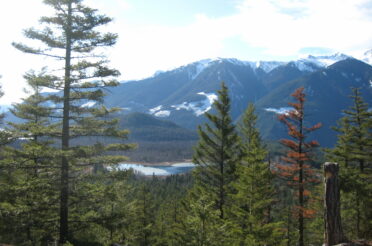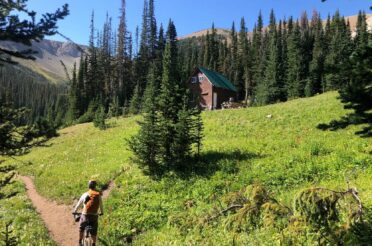There are a lot of adjectives that can be used to accurately describe Bighorn Sheep scouting. These words can range from challenging to miserable, exhilarating to disappointing. But the one word that is never used is easy. As such, my time involved in this season’s final bighorn sheep scout proved to be one of the most testing and rewarding experiences that I have ever had.
I knew that this trip in the mountains would be challenging – and for myself especially, as this was my first trip to the Shulaps range. Every wilderness experience is different, and none of us could possibly predict how we would relate to the many hours on horseback, the long days and late nights – and of course, the wind and weather.
In the morning of our departure, we loaded up the horses and drove to the trailhead. As soon as we arrived we quickly saddled up, packed our previsions, and headed up to camp. It was a thrill to finally get started, although it would be a long ride to sheep country.
I was quick to learn that one of the greatest challenges of finding sheep is accessing and navigating the rugged country that they live in. The California Bighorn resides in alpine meadows and foothills near rocky cliffs; with avalanche chutes and talus slopes which they use to escape from predators. To get to their terrain, I had to put my complete trust in my horse as we navigated our way through deep snow, steep slopes and rocky ridges.
On day one, we rode for four hours to our first glassing point; a ridge that overlooked two steep mountain slides. However, bad weather and poor visibility meant that we had no luck there, so we departed and rode for another two hours to our next glassing point. But again, we had no luck there either. I was quick to learn that sheep scouting is a process of elimination: check your favorite area first, then your second, then your third; they’ve got to be somewhere! The following morning, we went south to check a mountain, but no sheep this time! And the next morning we headed north again – farther this time, but with the same results.
By this point we were sure that we had covered all of the sheep area in this range, and that there was no reason to look further. Therefore, on the following day, we packed up everything and headed back to base camp.
Packing up everything included taking apart spike camp and transporting it back to base. However, whilst we had our pack-horse with us when we passed spike camp, we did not have our pack saddle. Because of this, we had to improvise. We used the saddle on my riding horse to pack the tent, which we strapped together using a combination of baler twine and shoe laces. Though unconventional, it proved effective, and we soon had my horse packed and ready to go. This meant that I was to ride our pack horse, Bubbles, bare-back through the mountains for three hours back to base. This was great fun, though slightly daunting when we hit the steeper mountain passes!
It turned out that the unexpected early snow had pushed the sheep down the mountains, far beyond our search. Only when traveling back to the ranch did we see bighorn sheep, right at the bottom of the slides at the edge of the lake. It proves that whilst we can plan ahead as best as possible, nature will always have the upper hand. None-the-less, it was an incredible experience, and something that I won’t forget in a hurry!
Molly, UK



